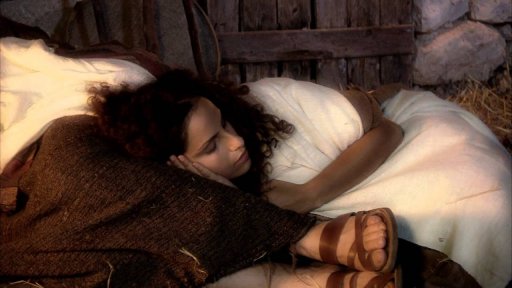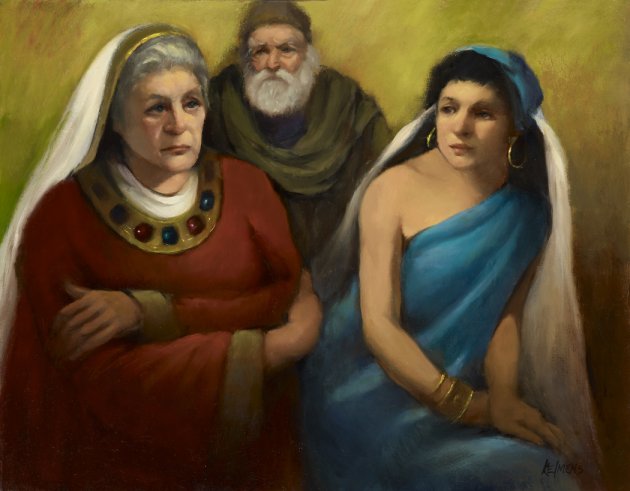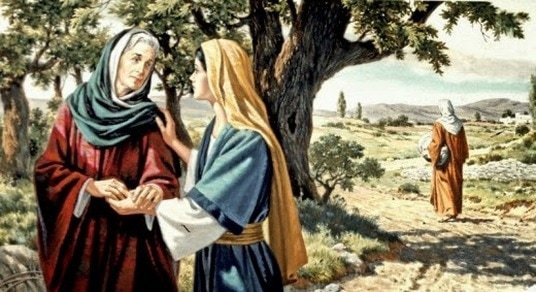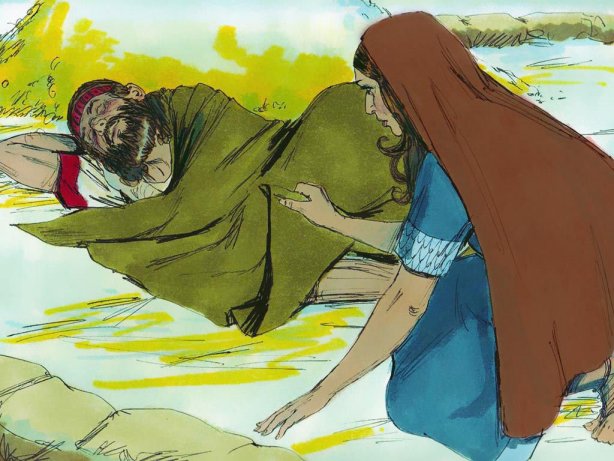Month 9:8, Week 1:7 (Shibi'i/Sukkot), Year:Day 5949:243 AM
2Exodus 6/40
Gregorian Calendar: Monday 4 November 2019
With Boldness & Assurance
Advancing Correctly in Our Gospel Walk

Introduction
Shabbat shalom kol beit Yisra'el and Mishpachah. Thank you for joining with me in assembly today to hear the message I received from Yahweh last night after struggling in vain half the day yesterday to know what that message was. In the end I quit searching, went away from my desk, and just left it up to Elohim (God) to contact me if He wanted me to open my mouth today or not. So here it is.
The Paralytic's Need for Boldness
Yesterday we were studying the incredible account of the healing of the paralytic in Mark 2:1-12. I spent all week immersed in those 12 verses and about 10 hours writing it all down...also pretty much at the last minute. One of the big revelations that I personally got, and which I shared with you, was the truth reminding us that we must be desperate enough to be willing to break through the roof of a house if necessary to reach the Saviour for a blessing. That requires emunah (faith) - lots of it - and sometimes it requires a team of friends willing to back you up in your determination to find whatever it is you need from Christ. If that paralytic and his friends had just sat around waiting for 'something to happen', nothing would have happened. They needed boldness.
Direct Access to Christ
Paul knew that boldness was needed which is why, he declared, that in Messiah Yah'shua (Jesus) our Master "we have boldness and access with confidence through emunah (faith) in Him" (Eph.3:12, NKJV). Because of his "boldness", and because of the "boldness" of his four friends, the paralytic got direct "access" to Christ, didn't he?
Nothing Ventured, Nothing Gained
Now I can understand why some of us might hesitate at being bold in pursuit of some things. Boldness has plus and negative aspects, doesn't it? We can be bold in the wrong way and make fools of ourselves and actually end up overall losing rather than gaining. But as the saying goes, "nothing ventured, nothing gained". That taking bold risks might sometimes work for those in the secular market or in politics is all very well but as representatives of Messiah we have to make sure that we are directed by the Ruach haQodesh (Holy Spirit) and not our own lusts. The Scripture doesn't say so directly but I think it's pretty obvious that Yahweh was in the decision-making process of that paralytic man and his four friends. After all, things worked out magnificently for him. Not only was the man restored to full health but he was forgiven of his sins too.
Only One Mortal Testing Ground
"Once bitten, twice shy," another saying goes. I think many of us lose our boldness after having made a disasterous mistake which we're anxious not to repeat. I understand that - really I do - but equally it is true to say that if we remain cowering in a corner because we're afraid to mess up a second time, no forward movement in our lives will be forthcoming anymore. We have to step out of the shadow, go into serious prayer for direction, and boldly try again, no matter what others may negatively say to us or about us. We don't get a second crack at this in another reincarnation because after this life there is no more mortality - no more testing grounds for us. Next comes life as a disembodied spirit and after that, the resurrection.
From Servants to Friends
So that's what we were talking about yesterday, but today is another day. The Bible series will go on but this particular message is not apparently supposed to slink off somewhere into the fog and be lost from sight. Once forgiven and once healed - and remember, the story of the paralytic is a picture of salvation - so once saved we have to go on to pursue the Saviour as our Bridegroom. We don't automatically become the Bride upon being saved (the Bride consists of those who are saved, Torah-submitted, and have a deep personal relationship and spiritual intimacy with Yahweh - the difference between the second and first resurrection categories of believer) just as newly made talmidim (disciples) don't become trusted friends of the Master until they have first learned to be obedient servants. How do we become His friends? Like He Himself said:
"You are My friends if you do whatever I command you" (John 15:14, NKJV).
 Sarah and Hagar are commonly seen as representing two covenants -
Sarah and Hagar are commonly seen as representing two covenants -
the New and Old - but they are also pictures of the Friend & the Servant
relationship and two resurrections, with Abraham a picture of Messiah
Torah Obedience Leads to True Love
Are we obedient? Are we Torah-compliant generally in our gospel lifestyle but beyond that - and this is what He is particulartly getting at - are we receiving and faithfully executing our daily marching orders? As He went on to say:
"No longer do I call you servants, for a servant does not know what his master is doing; but I have called you friends, for all things that I heard from My Father I have made known to you. You did not choose Me, but I chose you and appointed you that you should go and bear fruit, and that your fruit should remain, that whatever you ask the Father in My name He may give you. These things I command you, that you love one another" (John 15:15-17, NKJV).
Faithful in All Things
If you're ignorant of what Yah'shua (Jesus) wants you to be doing in your life, you're probably still a servant. Have you chosen your own calling in the Kingdom, or are you performing the calling He gave you? Remember, as His allegorical wives, we're supposed to be "obedient in all things", not just some, not just the things that our flesh gives us permission to do. As Paul said, "wives must be reverent, not slanderers, temperate, faithful in all things" (1 Tim.3:11, NKJV). So we need to get our checklists out to determine whether we have followed through or not with the instructions we have received, both the general and the specific. Again, remember the saying, "time waits for no man (or woman)".
When Only a Roof Will Allow Us In
What I like about the story of the paralytic, and especially the way Mark tells it in the bold no nonsense style of Peter who supplied the account, is that it's straightforward. It's easy to talk about something abstract like 'faith' but we all of us want, and need, concrete instructions. Imagine an army trying to function without precise orders (2 Tim.2:3-4; Phil.2:25; Philemon 2). The way available for the paralytic and his friends was divinely determined for them - only one 'door' opened for them, and that was through the roof. How, then, can we at least start on our journey to becoming a 'Bride'?
A Revelation and a Visionary Flash
Unmistakably, around 9 pm last night after I had stopped trying to force Yahweh to give me an answer on what to preach today, He just dropped the answer into my head. Just like that. "Ruth", I heard, and then a vision as a very short flash. I saw the moment that ensured Ruth became the bride of Boaz.
The Story of the Book of Ruth
For those of you not familiar with this Tanakh (Old Testament) account that follows immediately after Judges, allow me to give you the briefest of summaries. In this simple but beautiful story we are led to understand Yahweh's intimate concern for the humble affairs of our lives. No detail is unimportant to Him. He is the One who orders all circumstances of daily life, even for the so-called most 'unimportant' people, because everyone is important to Him. This is the story of the new-found emunah (faith) of a Moabite girl, and her sacrificial love for her mother-in-law, and how this is woven into the great tapestry of Yahweh's plan for salvation, not only Ruth's own salvation from being a widow with no protector, but how, in finding the protector ordained for her by Yahweh, she becomes a key figure - a mother - in the great hereditary line leading first to David and thence to the Messiah Himself. Her's is another case of a little picture within a much larger picture as we talked about yesterday.
The Choice to Sacrificially Love
There's been a famine but now it's over and Yahweh has once again demonstrated His care for His people. Ruth's sister, sorrowfully, returns home to the hope of a second marriage, the famine having killed off the husbands of all three of the women - the two sisters and their mother-in-law, Noami. Orpah puts the prospect of a second marriage before her relationship with Elohim (God) and returns to Moab, still a pagan and still out of right-relationship with the Creator, Yahweh. Ruth casts her lot in with her Yehudi (Judahite) mother-in-law, putting Naomi's needs before her own so that she is not left alone to die impoverished in her old age. She chooses Naomi's people and, significantly, accepts their Elohim (God). She converts. So now the two women, the older Noami and the younger Ruth, cross the border into Israel and to an uncertain future. They go in emunah (faith), as we must too.
 Naomi, Ruth, and Orpah
Naomi, Ruth, and Orpah
A Benefactor's Field
Both women were obviously very poor and defenceless. There were not many ways a widow could earn a living in those days, a reason Yahweh commanded in the Torah (Lev.19:9-10) that gleanings from the harvest should be left for such as they. Apparently by 'chance', but really by divine design, they come across an open field belonging to one Boaz, a relative of Elimelech, Naomi's late husband. And as most of you know from the story, Boaz goes way beyond the Torah's demands and makes sure the two women get extra grain.
Marriage Rights of a Widow to a Close Relative
It's a long story which I don't have time - and we don't have the need - to get into here concerning the Law of Levirate which under the Old Covenant gave someone in Ruth's situation - a childless widow - the automatic right to seek marriage to a close relative such as Boaz, even though he was almost certainly already married [1] and, as we know, was much older than her (Ruth 3:10), as Joseph was to Mary the mother of Yah'shua (Jesus). What's important is how she asks if he will assume the responsibility to marry her and as we look at this, I want you to consider how we, in our turn, are to approach the Divine Bridegroom as potential allegorical wives.
Naomi's Extraordinary Instructions to Ruth
This is what Naomi instructs her daughter-in-law to do:
"You have been picking up grain alongside the women who work for Boaz, and you know he is a relative of ours. Tonight he will be threshing the grain. Now take a bath and put on some perfume, then dress in your best clothes. Go where he is working but don't let him see you until he has finished eating and drinking. Watch where he goes to spend the night, then when he is asleep, lift the cover and lie down at his feet. He will tell you what to do" (Ruth 3:2-4, CEV).
The Meaning of Bathing and Perfuming
Now this may seem very strange to Western sensibilities but that is only because we are highly disconnected from Hebrew practices. By taking a bath and putting on fresh clothes, Ruth was not only symbolically ending the mourning for her lost husband, as it was for David when he did the same following the death of his first child with Bathsheba (2 Sam.12:20), but also making herself attractive like a betrothed woman (Ezek.16:9-12). The interesting part is where Ruth uncovers the sleeping Boaz's feet and lies down against, or next to, those feet in such a way as not to wake him up, and there she will remain the whole night until he wakes up and finds her there.
A Bold Proposal by the Woman
There are two important things to note about this action that I want you to pay close attention to:
- 1. This is a proposal of marriage - notice that it is the woman initiating the proposal, which was the usual, proper way in a plural relationship (Is.4:1); and
- 2. This is a very BOLD, no-nonsense, unambiguous marriage proposal indeed!
The Symbolic Meaning Explained
Now you may be asking, quite rightly, why and how this is a marriage proposal and how it is a bold one! In English the text is typically rendered "his feet" (Ruth 3:7) but in actual fact in the Hebrew text the word margelot is used, which was in those days a euphemism for sexual contact. Now don't get this wrong - Ruth was not making a sexual advance which not only would have been incompatible with the strict Torah requirement for pre-marital chastity; but at the same time the action would have made it perfectly clear what Ruth was after - marriage! Remember also that in Scripture, when Yah'shua (Jesus) washed the feet of the talmidim (disciples), that the feet symbolise the whole body (Jn.13:10). And that's why it was such a bold move on Ruth's part whilst remaining within the borders of social propriety. Her older, wiser mother-in-law knew exactly how Boaz would interpret her behaviour.
The Threshing Floor
Also please note that this was not some private bed chamber. This was the threshing floor and temporary granery where all the labourers would have slept communally, presumably the men on one side and the women on another, or in two separate buildings if such were available. It might even have been outside. So all of this would have been done in public, as it were, so no accusation of fornication could have been levelled by an accuser.
Action and Reaction
Let's see what happened next:
"After Boaz finished eating and drinking and was feeling happy, he went over and fell asleep near the pile of grain. Ruth slipped over quietly. She lifted the cover and lay down next to his feet. In the middle of the night Boaz suddenly woke up and was shocked to see a woman lying at his feet. 'Who are you?' he asked. 'I am Ruth, sir (lit. 'your servant)' she answered, 'and you are a relative who is supposed to take care of me. So spread (lift) the edge (lit. 'wings') of your cover over me.' Boaz replied:
"'Yahweh bless you! This shows how truly loyal you are to your family. You could have looked for a younger man, either rich or poor, but you didn't. Don't worry, I'll do what you have asked. You are respected by everyone in town...Now go back to sleep until morning'.
Ruth lay down again, but she got up before daylight, because Boaz didn't want anyone to knew she had been there. Then he told her to spread out her cape, And he filled it with a lot of grain and placed it on her shoulder" (Ruth 3:7-11,13b-15, CEV).
 Ruth lifts Boaz's cover to hide under his 'wings' as a wife-to-be
Ruth lifts Boaz's cover to hide under his 'wings' as a wife-to-be
From Shipkhah to 'Amah
You see, what we have here is a picture of Yah'shua (Jesus) the Bridegroom (Boaz) and the Messianic Bride or us (Ruth) at the point at which the Bride makes the transition from 'servant' to 'friend' by virtue of greater spiritual intimacy. Why, then, you may ask, did Ruth refer to herself as his "servant"? Because the word translated "servant" (or "sir" in the paraphrase version I have used here) is the Hebrew word 'amah meaning 'maid-servant' as distinct from 'bond-servant' which is shipkhah in Hebrew which she refers to herself earlier as in Ruth 2:13. So in making this bold approach, in emunah (faith), she has understood that Boaz will not refuse this proposal just as Yah'shua (Jesus) will not refuse spiritual intimacy with us if our desire is to be even more closely bonded to Him according to His terms.
Under the Wings of Boaz
I want you to notice that the "edge" of Boaz's cover in actual fact renders the Hebrew word meaning 'wings' which is a way of saying that in making a marriage proposal, which the prospective bridegroom (Boaz) cannot refuse because he is obligated by Torah, she is putting herself under his spiritual covering, which is again another way of saying she is claiming him as her husband along with any other wives he may already have, which was usual in Levirate marriages. There is, of course the remote possibility he was a widow or the even remoter possibility that he was single, as we're not told, and nor does it actually matter one way or the other.
The Restoration of All Things
I realise that this mindset is totally alien to the Western way we have been trained to do things through centuries of evolution of customs and practices. But if we are serious about entering into the fullness of right relationship with Yah'shua (Jesus) then we must learn to do things the way the ancients did because it is according to sacred tavnith or pattern and because we are a part of "the times of restoration of all things" (Acts 3:21, NKJV).
The Kinsman-Redeemer
Finally (and there's so muchwhat this incredible truth means for us today that I've written an article on it which you'll find linked below), let me say that Boaz is performing the Torah rôle as a Kinsman-Redeemer which as I am sure you either know, or have already guessed, is a picture of Yah'shua (Jesus) as our Redeemer or Saviour. All of this action, moreover, occurs, as I said, on the threshing-floor which signifies that we only have the right to approach the Redeemer if we are ourselves willing to be threshed or purified of our sins, because that is a condition of becoming the Messianic Bride (Dan.12:10).
Conclusion
There's so much more to look at in the Book of Ruth but we don't have time today. My sole purpose is to once again stress the need to be bold and daring in our gospel walk. Yah'shua (Jesus) is not hard to approach and He will not reject our advances if we do so lawfully according to scriptural tavnith (pattern), you may be assured of that. I hope this has been a blessing to you and that you will enjoy a restful Sabbath and a successful, productive week in the Master! Amen.
Endnotes
[1] See Ruth the Yeshurun Israelite: Emunah vs. Ma'aseh haTorah and Theocratic Government and the Kinsman-Redeemer
 Français
Français

 V145
V145
|


